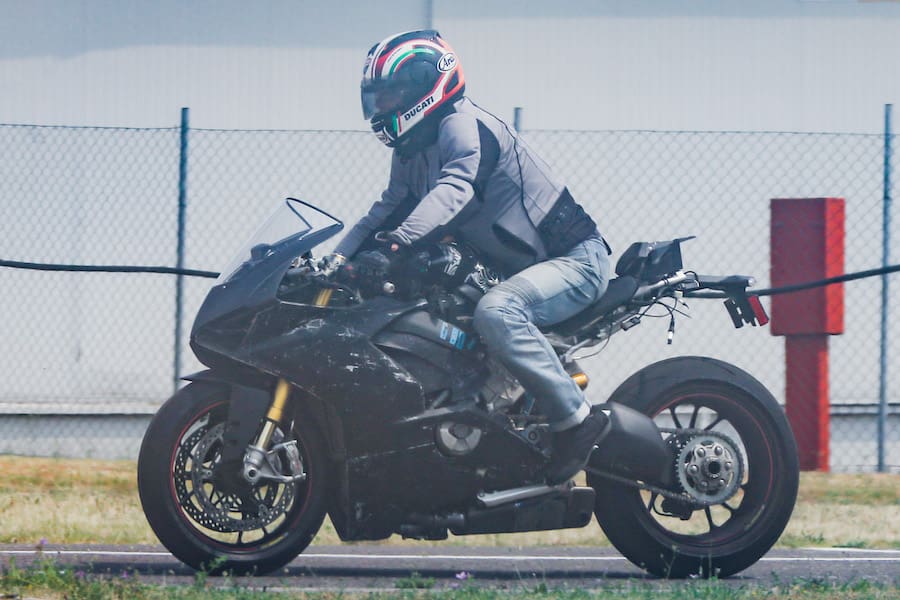The headlights are inset into reshaped intakes, hidden even further from view than they are in the Panigale. The side panels are different, arching up over the frame to meld into the fuel tank. The rear panels are missing on this prototype, but another one featured a Panigale-style rear end with different tail lights and slightly altered proportions.
Of course, the big news is the 999cc V4 that was developed alongside the second-generation (2015) Desmosedici GP bike, the road-going version uses the same architecture and layout.
Its power won’t be that far off, either – the 1299 R Final Edition makes 154kW (see below), the Superleggera makes 160kW, and it’s likely the V4 will be even more potent. It boasts Desmo valve gear, so while the engine’s format might be in line with some of its rivals, the technology remains distinctly Ducati.
Although the engine takes its cues from the 2015-on GP bike, the chassis harks back to the 2009 monocoque design.
Like the current Panigale, it sits above the engine, bolts to both cylinder heads and carries the headstock, using the engine to connect it to the swingarm.
Although the chassis might not double as the airbox, it looks to be a beam frame that wraps around a separate airbox.
In front of the single-sided swingarm, the visible rear cylinders reveal the engine is tilted further back than the norm. The front cylinders will be more upright to allow room for radiators while keeping the wheelbase short and weight forward.
This means there’s no room for a horizontal shock. The conventional unit is quite far back to make space for the belly-mounted exhaust system.
By Ben Purvis












